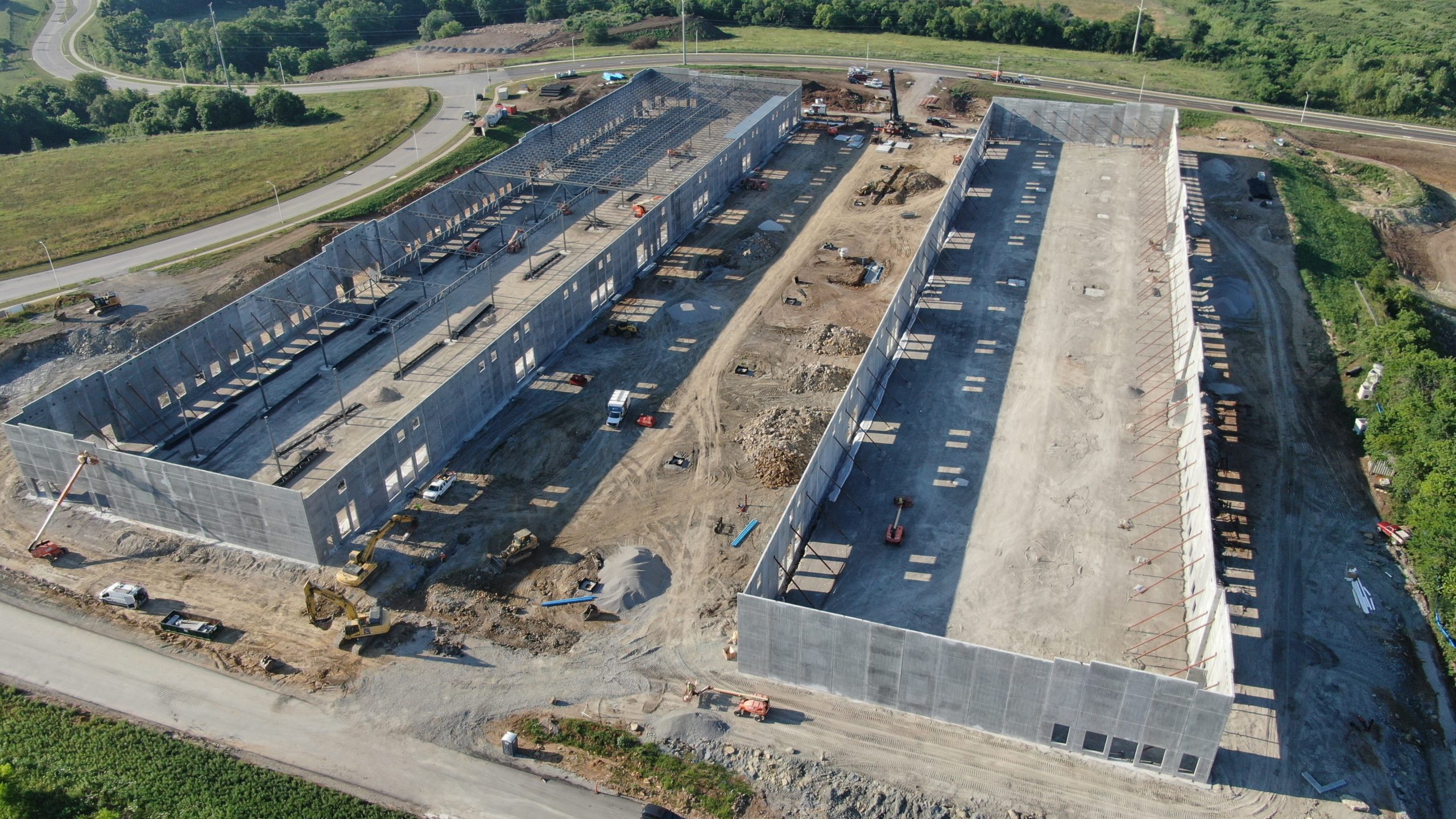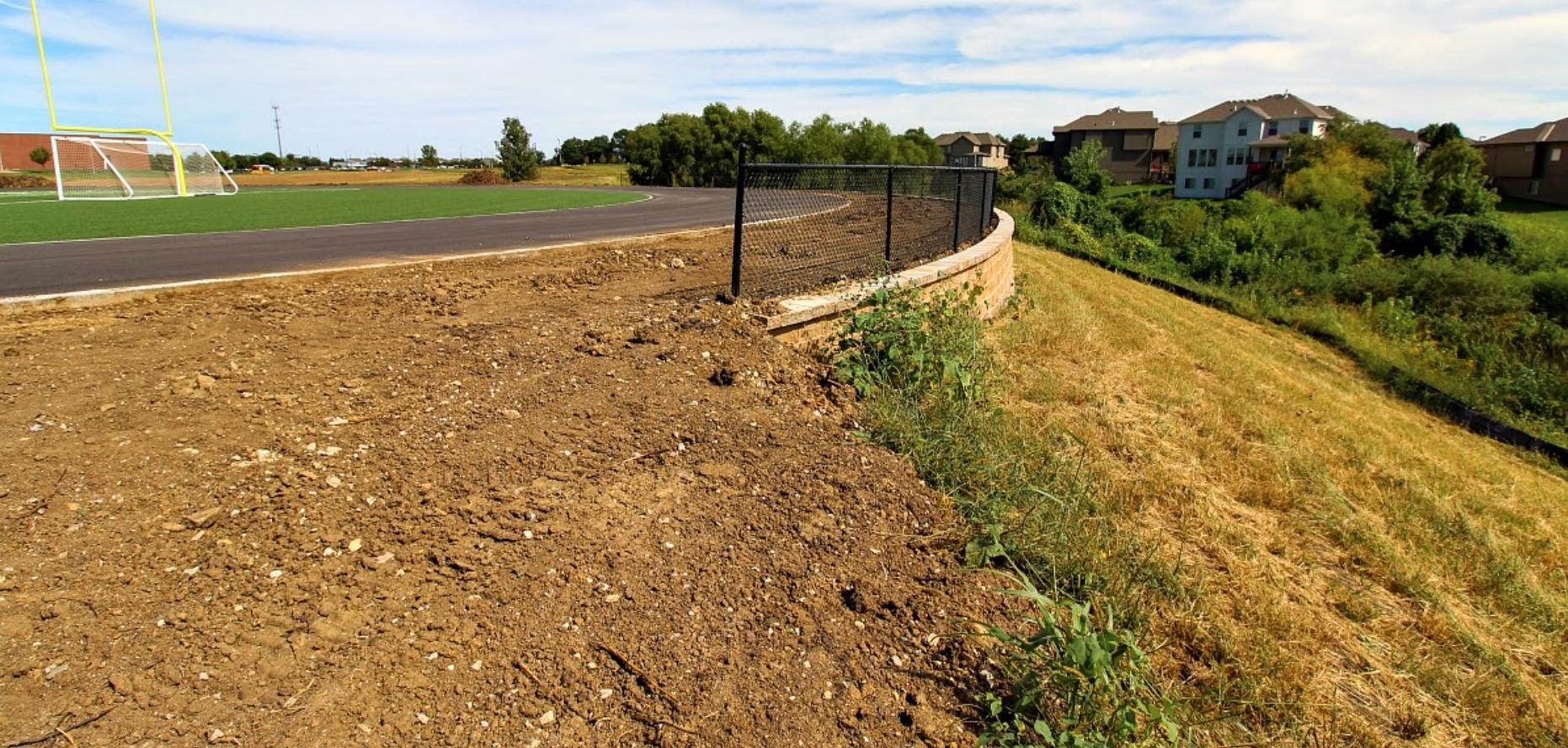Look beyond I-435 to the west of Kansas City’s urban core and you’ll see a surge of new commercial development taking shape. It’s not all typical, flat farmland and turning it into opportunity requires a strategic approach. Before you put together plans for a construction project, consider a few pointers based on our experience.
Don’t Be Surprised by a Predictably Unpredictable Subgrade.
Be careful not to make assumptions about what’s just below the surface and deeper down, especially along K-10 in the vicinity of Lenexa. Every potential build site is different to some degree and variations from site to site can be substantial. Much of the landscape is hilly, and history has left behind miscellaneous man made factors that will impact everything from site selection to construction.
Decades of variables ranging from undocumented subgrade material, buried trees and buried gravel roads to improperly filled farm ponds lurk underground, even in areas that appear to be untouched. In addition, old limestone mines abandoned as far back as the 1980s wind through the area and present ongoing challenges for developers. The proximity of mines isn’t necessarily a deal breaker when it comes to project site selection, but you’ll need to clearly understand the limitations of the subgrade above and around them. You’ll also need to be on the lookout for mine spoils material carved out over the years and buried for disposal.
Uncovering subgrade wildcards and narrowing site selection is only possible through an extensive investigation. A precise boring plan with thorough soil testing will be critical in the hunt for a project site that’s feasible in context of your timeline and budget. Make sure your geotechnical engineering partner knows exactly how you expect foundations to perform so that they can pinpoint the potential of the subgrade to achieve your particular goals.
 Surface buildings at the Meritex Lenexa Executive Park constructed over abandoned limestone mines transformed into underground industrial space.
Surface buildings at the Meritex Lenexa Executive Park constructed over abandoned limestone mines transformed into underground industrial space.
Focus on Making the Most of Material Variations.
You may find everything you need in the subgrade to get your project safely out of the ground, but a lot of it may need to be engineered. Limestone, clay and shale are pervasive in the area, and quality and combinations vary from site to site. Dealing with it in preparation for structural loads can quickly get complicated.
If the material you’re working with is largely unknown, you may have to dig it all out for evaluation and then strategically put it back. Maybe only portions will need to be removed for examination. Importing additional fill material is always an option as well, and if you’re lucky, a supply of useful material will be readily available thanks to ongoing excavation and construction across the area. Be aware that seasoned geotechnical engineers will have a broader definition of what’s ‘useful’ and their ability to make limited options work could bring significant cost savings.
An experienced geotech partner will also have the kind of expertise needed to finesse an imperfect subgrade near the surface, even if it involves multiple material zones and a complicated approach. Adjusting a large foundation design to match zones ranging from solid limestone to rocky fill and native clay is fairly uncommon but can be just the thing to keep a project on track in unusual conditions. Clay’s shrink and swell capacity must be carefully calculated and measured in context of changing seasons to ensure reliability over time. However, clay can also be mixed with other materials in the development of a precise formulation for stability.
 A rocky subgrade is common with combinations of materials that vary from location to location.
A rocky subgrade is common with combinations of materials that vary from location to location.
Don’t Shy Away from Elevation Changes.
Rolling hills in the Kansas countryside west of I-435 often mean uneven terrain that can immediately raise red flags about the practicality of a particular build site. However, land in the area can still be developed even if it’s not naturally level. Elevation changes, including those beneath foundations covering a large area, can be addressed with the right strategies. Shallow bedrock can be jackhammered, or in extreme cases, blasted, to make enough room for utilities. Fill material can be engineered to raise lower areas of a site.
If you have the luxury of options in dealing with an elevation problem at a particular site, your budget and timeline become key factors in which options you choose. Conservative, straight-forward approaches will minimize construction risks but may come with costs that put them out of reach. Geotechnical engineers with a long track record in the area will be ready to explore creative alternatives that make better use of existing conditions and available materials. For example, the use of surcharge material loads to mimic the weight of planned structures can stabilize large amounts of unknown buried material as an alternative to removal.
 A retaining wall helps secure one end of the athletic field at St. James Academy that had to be raised approximately 15 feet.
A retaining wall helps secure one end of the athletic field at St. James Academy that had to be raised approximately 15 feet.
Step Up to the Challenge.
Matching ground conditions to the needs of a planned structure is what geotechnical engineering is all about. We look at challenges like hilly terrain, limestone mines and elevation variations as pieces of a puzzle we’re excited to put together. One thing we’ve learned about the Kansas countryside just outside of the 435 loop is that each build site is different and a custom solution based on specific conditions is typically required. Cookie-cutter approaches won’t serve you well in this neck of the woods, especially when efficient use of time and money are ongoing priorities.

